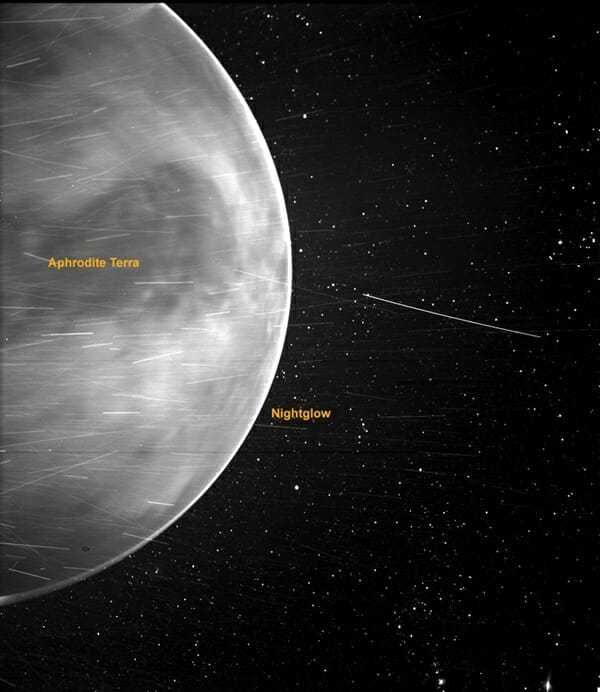
The US NASA’s Parker Solar Probe, a solar probe that orbits the sun, has captured the stunning surface of Venus, Cnet and other foreign media reported on the 25th (local time).
This picture was taken by Parker Solar Probe during his third flyby around Venus last July. Last summer, the probe was photographed about 12,380 kilometers away while in close flight to get closer to the Sun with the help of Venus’ gravity.
NASA released the picture and said it had found a brightly lit border around Venus. The researchers found that this rim is a night glow, or “the light emitted when oxygen atoms recombine into molecules in the atmosphere.” This photo was taken using wide area imager (WISPR) equipment.
The dark area in the center of the picture is the highest point on Venus called Aphrodite terra. It is known that the reason this place looks dark is because the temperature is 30 degrees lower than the surrounding area.

“WISPR is customized and tested for visible light observation,” said Angelos Vourlidas, a WISPR project scientist at the Johns Hopkins Institute for Applied Physics. I looked into it.”
Related Articles

Solar probe, stopped by Venus on the way to the sun

When I saw Earth and Venus on Mars… Small like dust

Comet Niowise captured by NASA’s solar probe

A strand of thread was found in the sun.
This means that WISPR can capture near-infrared rays, Cnet said. WISPR was developed primarily for photographing the sun and solar wind.
The last close flight of the Parker Solar Probe to Venus took place on the 20th, and the data observed this time will be transmitted to Earth in April.
